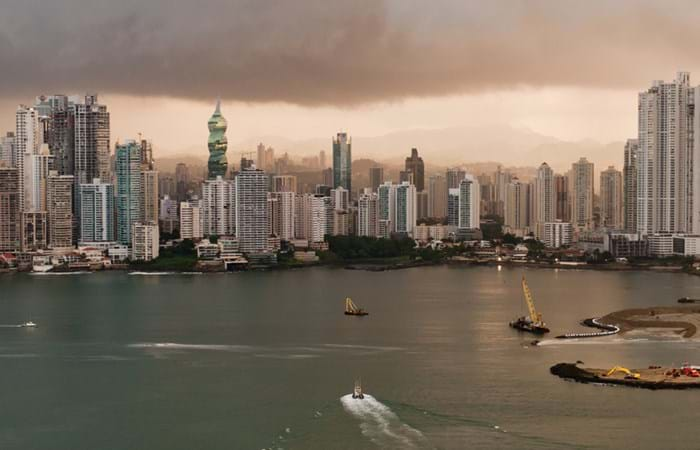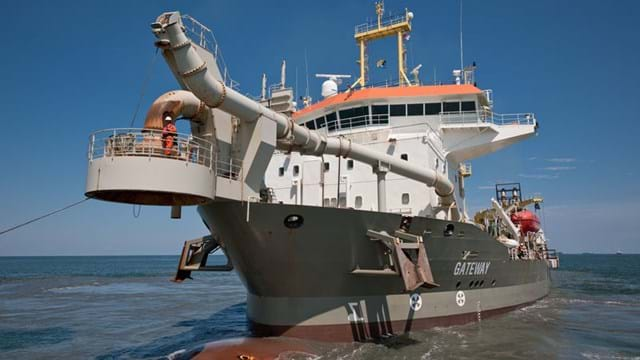The shoreline of Panama has increasingly become densely populated and, as the economy has boomed over the past 10 years, there is strong demand for high-end products. The real-estate market has taken a revolutionary step with the completion of the the first artificial real-estate island in the Americas.
The Santa Maria island is named after one of the vessels used by Christopher Colombus on his first transatlantic voyage in 1492. The island is connected to the shore by a bridge. The project was initiated by the Ocean Reef Island Inc., and Boskalis Panama S.A. was awarded the Design and Construct contract at the end of a tender procedure. The decisive factors included not only the price but also, and more importantly, the reliability of the contractor in terms of quality, the involvement of local management, the proposed construction method, equipment resources, and in-house engineering capability and capacity. After completing two pre-contracts (the construction of a promotional island and the partial removal of soft sediments), the main contract was finally signed on 7 January 2011.
The construction of the island
The first step in the project was the dredging and disposal of the soft sediments overlaying the weathered rock layer with the clamshell Alex and TSHD Flevo. Work then started on the construction of the rock dike. The rock was produced by the Client in the area of Vacamonte and then taken by truck to the Boskalis loading facility alongside the port of Vacamonte. Prior to the start of the contract the Client and Boskalis undertook a detailed soil investigation in the (rock)quarry area in order to establish the presence of the various required gradings. Also during the quarry activities Boskalis supported the Client in order to achieve an optimal quarry performance. The loading facility is in a location that is not sheltered against the long pacific swells. Adopting a flexible loading structure reduced downtime and Boskalis was able to match rock production output without difficulty. A total of five different types of rock grading were used to work as cost-effectively as possible while maintaining the stability of the island given the long and strong swells. The inside of the rock dike was covered with a geotextile to prevent the loss of sand through the dike back into the ocean. By April 2012, the island was ready for filling with sand.

